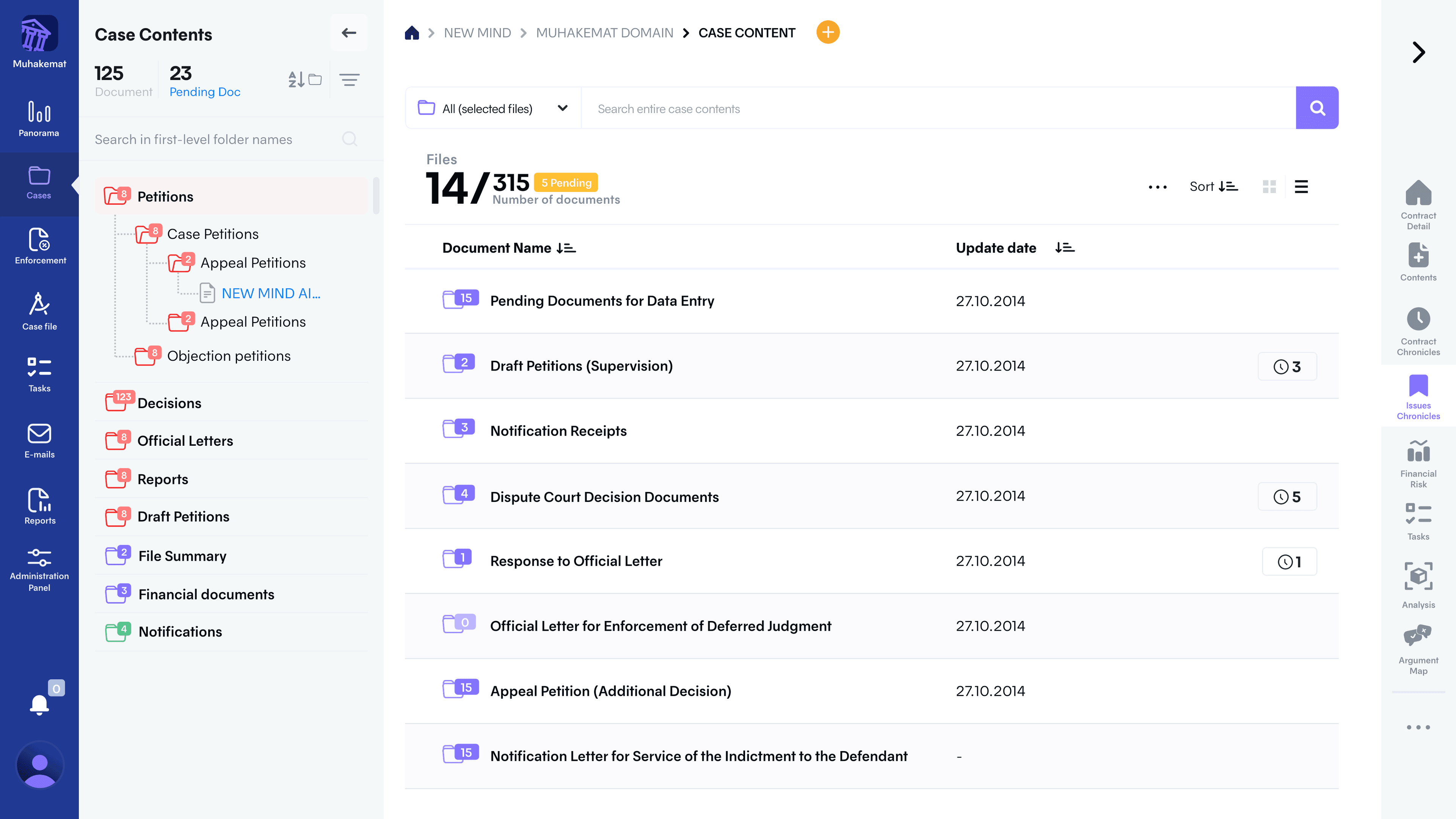

Every document within a file is indexed and retrievable—alphabetically, chronologically, by legal function or procedural stage.
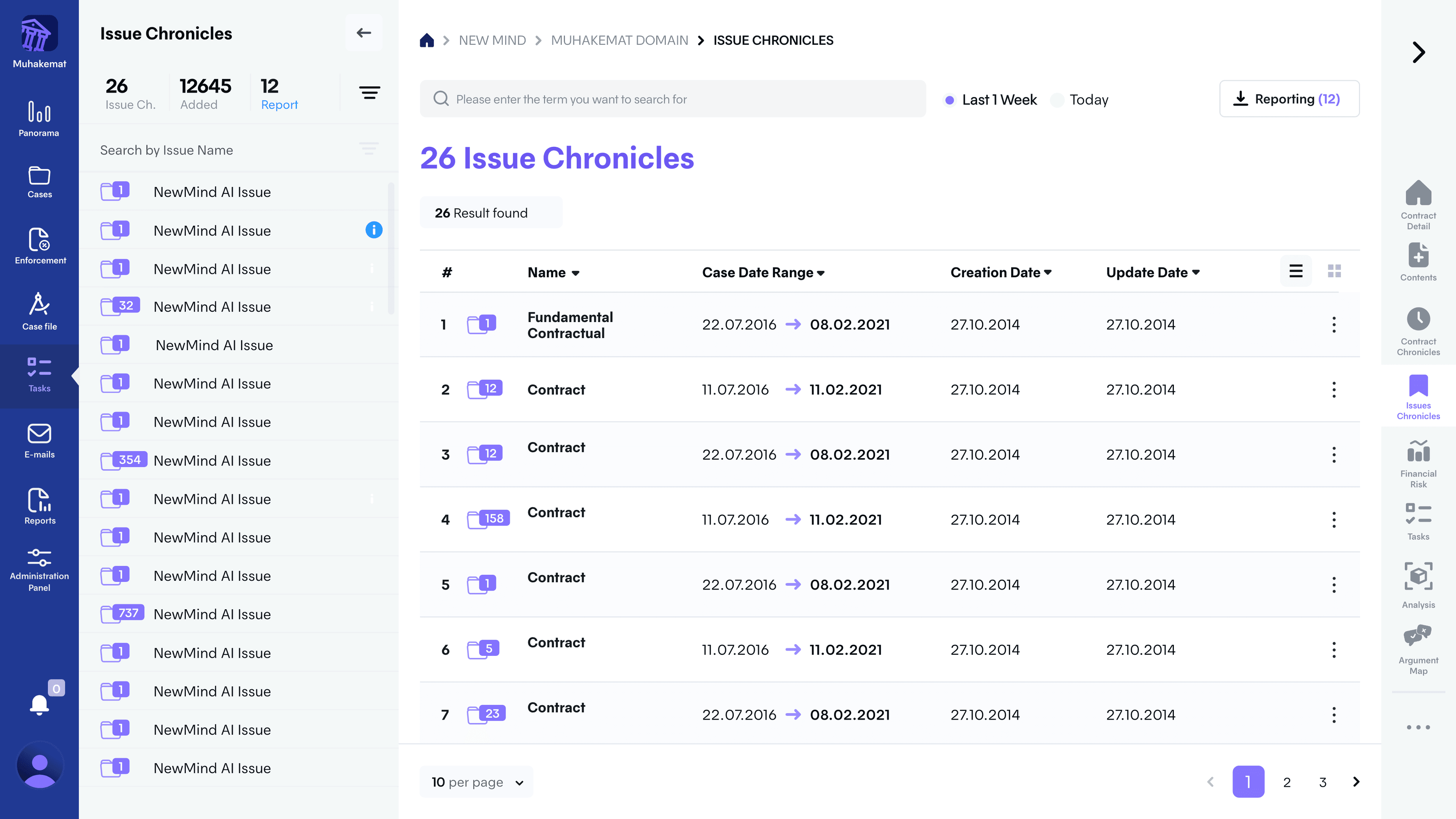
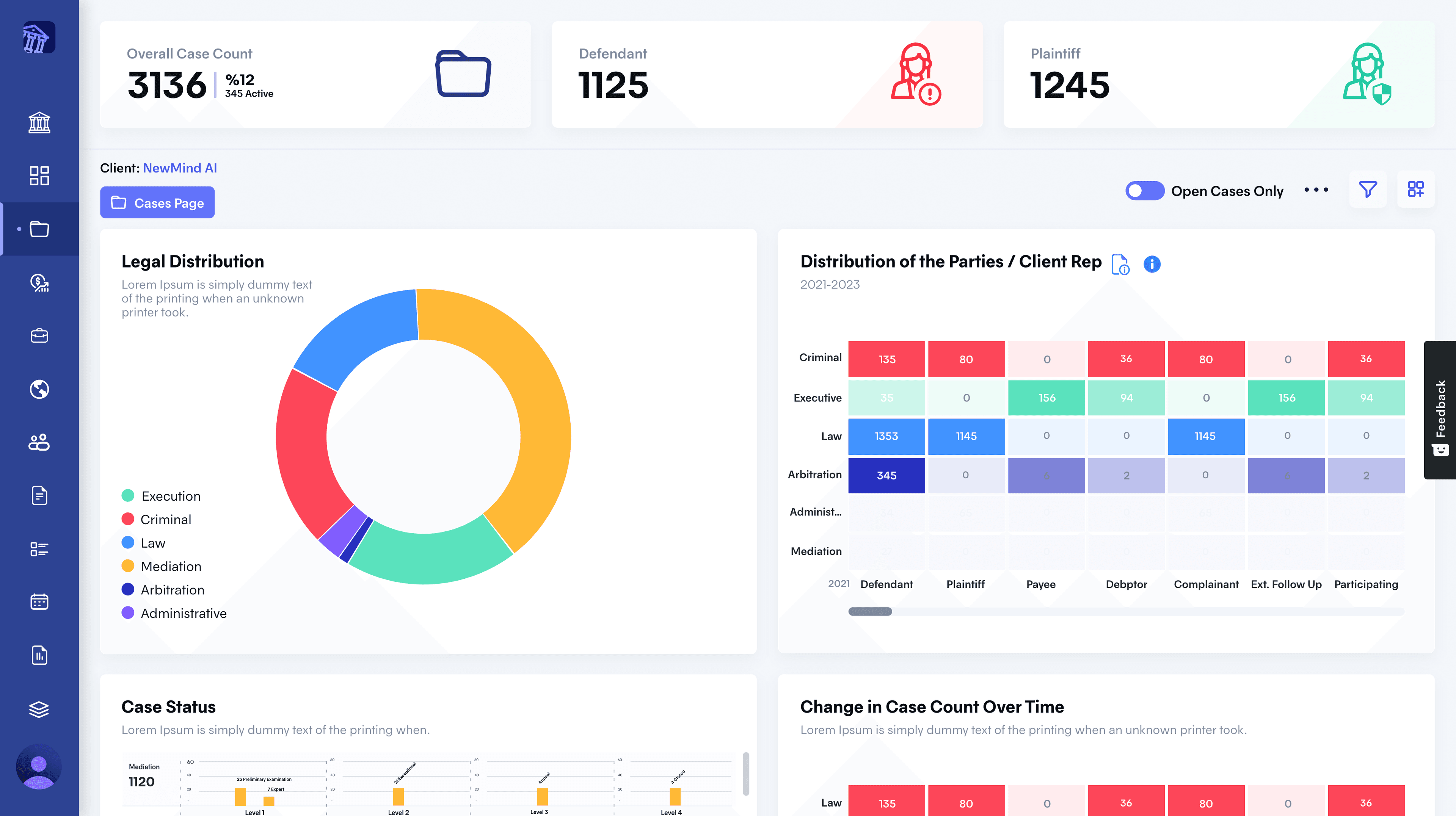
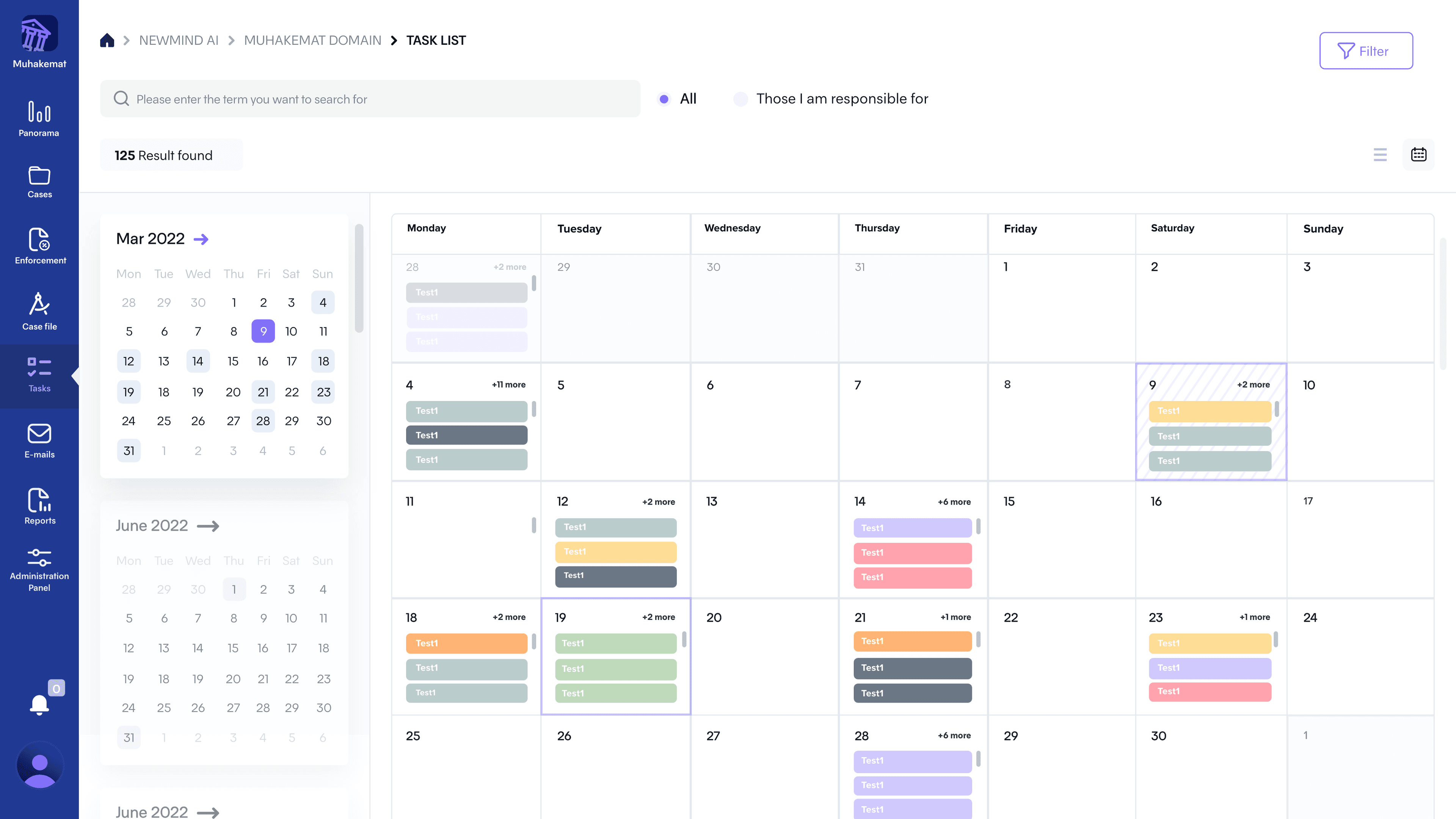
Muhakemat is a Mecellem platform module developed to digitize and streamline case workflows from start to finish. It organizes petitions, rulings, reports, financial risks, and case notes into a searchable, filterable structure—mapped chronologically, alphabetically, or by taxonomy.
Integrated with UYAP and enhanced by Mürşit's semantic AI, Muhakemat delivers visual timelines, argument-based mapping, and automation tools that accelerate legal research, simplify documentation, and reduce the margin of error.
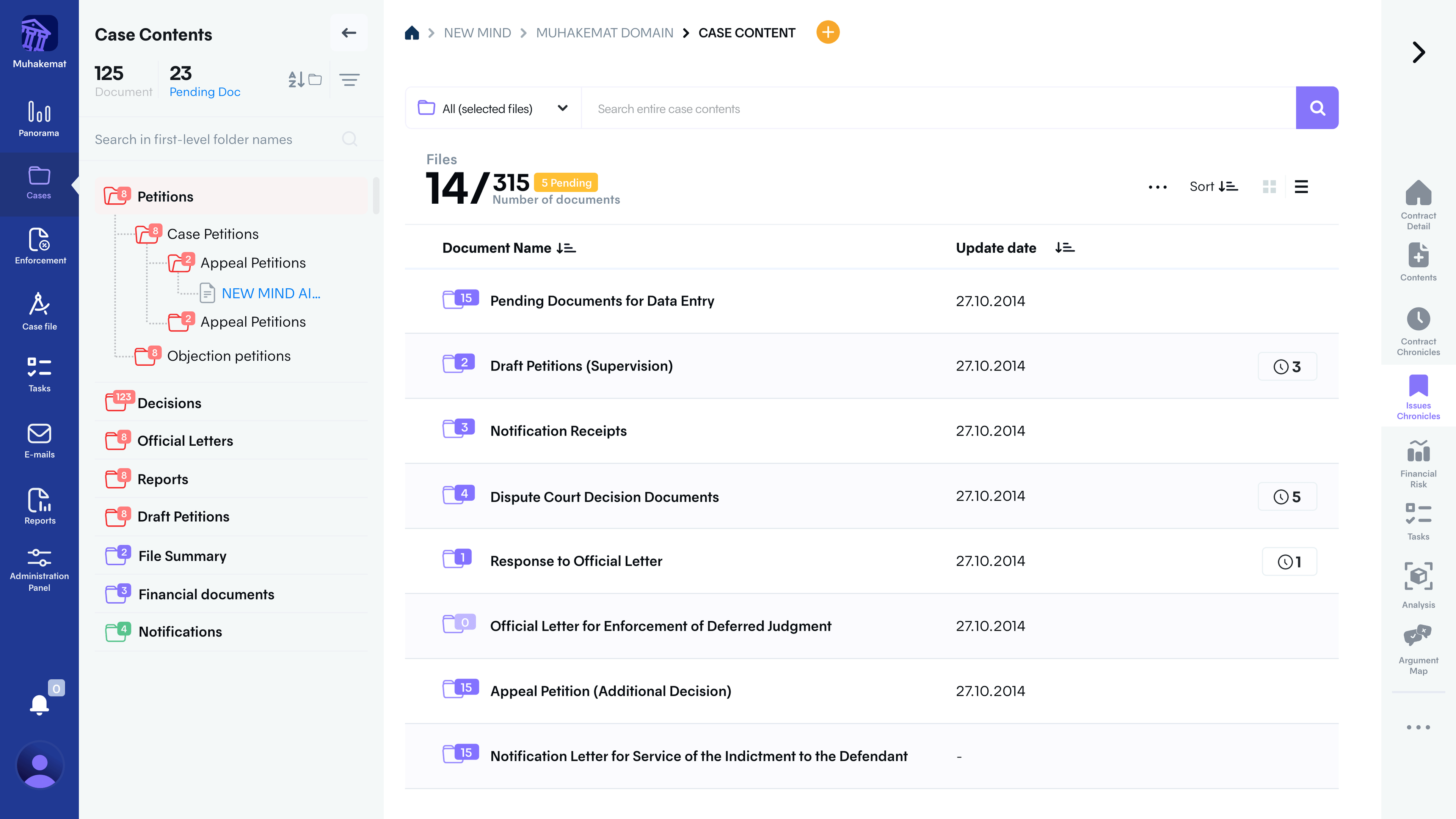


.png&w=3840&q=100)

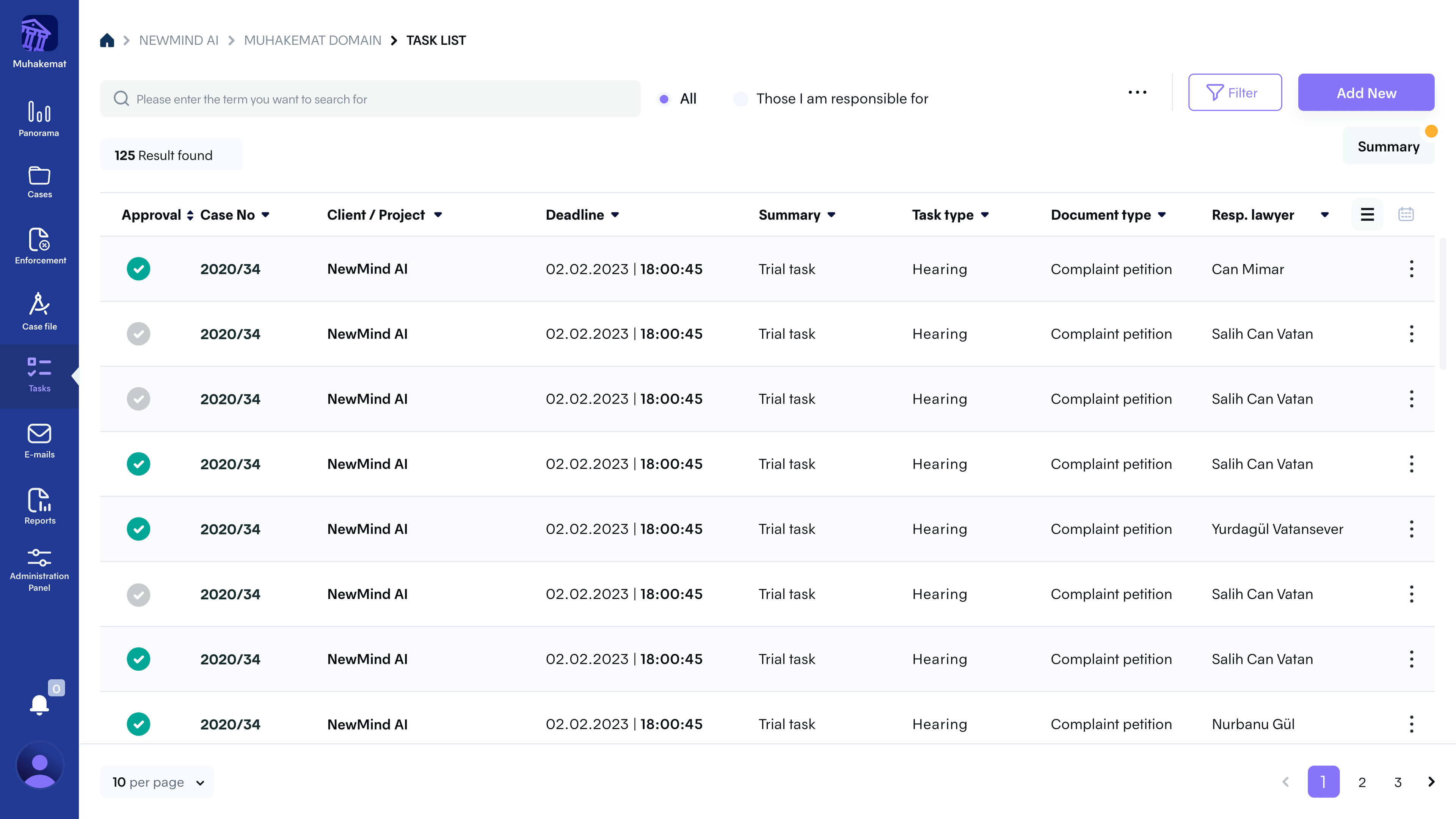




36+ Products
The Mecellem platform effectively coordinates its dynamic products and models to analyze your corporate data in line with your business needs; it elevates your corporate governance to the highest level a wide range of areas, from law and tax management to finance, engineering, and contract management.
Emerging Interactive Next-Generation Intelligence Technologies
Machine learning enables systems to identify patterns in data and improve performance over time without being explicitly programmed. It powers predictive analytics, intelligent automation, and adaptive decision-making across industries, making systems smarter and more efficient with every interaction.
The Metaverse is a shared, immersive 3D virtual environment where users interact as avatars. It blends gaming, work, and social interaction into a unified digital space, offering new ways to connect, collaborate, and experience content in real time.
Legal research technology streamlines the analysis of complex legal documents by automating the search and comparison of cases, statutes, and precedents. It enhances accuracy, reduces research time, and empowers legal professionals to make faster, more informed decisions
Blockchain is a decentralized digital ledger that securely records transactions across multiple systems. It ensures transparency, immutability, and trust without the need for centralized control. Widely used in cryptocurrencies, finance, and supply chain management, it redefines how data and value are exchanged.
The Internet of Things connects everyday devices to the internet, allowing them to collect, share, and respond to real-time data. From smart homes to connected vehicles and industrial automation, IoT enhances convenience, efficiency, and intelligence in our environments.
Speech recognition technology converts spoken language into written text with high accuracy. It powers voice assistants, automated transcription, and hands-free control, improving accessibility and enabling more natural interactions between humans and machines.
Natural Language Processing allows machines to understand, interpret, and generate human language. It’s used in chatbots, translation services, sentiment analysis, and more—bridging the gap between human communication and machine understanding for smoother, more intelligent interactions.
E-discovery tools automate the identification, collection, and analysis of digital evidence for legal cases. They speed up document review, ensure compliance, and enhance accuracy—making them essential in modern litigation and regulatory investigations.
Big data visualization transforms massive and complex datasets into clear, interactive visual formats. It uncovers hidden trends, patterns, and insights, enabling decision-makers to better understand information and take action with confidence and clarity.
Computer vision enables machines to interpret and make decisions based on visual input. From facial recognition and augmented reality to autonomous vehicles and security systems, it allows computers to understand and respond to the visual world.
OCR technology extracts printed or handwritten text from images, scanned documents, and PDFs. It simplifies the digitization of physical records, making text searchable and editable—widely used in archiving, finance, and government services.
Faceted classification organizes information using multiple overlapping categories or filters. It improves search accuracy and content discoverability by allowing users to explore data from different angles, commonly used in e-commerce, digital libraries, and complex databases.
Cloud technologies provide scalable storage, computing power, and digital services over the internet. They enable remote access, data security, and rapid deployment of applications—playing a vital role in digital transformation and global business operations.
Document automation uses templates and structured data to automatically generate documents. It reduces manual input, minimizes errors, and streamlines workflows—boosting efficiency across legal, administrative, and business processes.